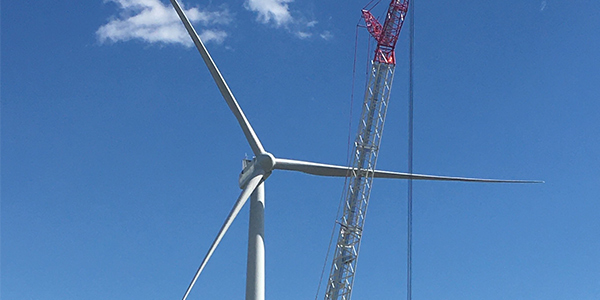MISO will ask FERC for more time to plan the complicated process of opening its markets to distributed energy resource aggregators, RTO officials said Monday at a virtual workshop.
Staff said MISO must seek a six- to 12-month extension of the July 19 compliance filing date to in order create a sophisticated enough blueprint to comply with FERC’s Order 2222, which requires RTOs to establish rules allowing DERs to participate in organized wholesale markets on an aggregated basis.
MISO DER Program Director Kristin Swenson said an extension probably won’t affect MISO’s implementation date for compliance.
“But there’s a lot to work through before July, and we’re a little worried about that. … We’re not the only ISO looking to extend. Our brethren in the other ISOs … also think this is a lot,” Swenson said.
MISO Managing Assistant General Counsel Michael Kessler said some of the other RTOs would likely ask for similar extensions.
“The extension will allow for more time to have discussions like these,” he told stakeholders.
Swenson said adherence to the July filing date would likely provide staff and stakeholders with just one public forum in which to discuss the different aspects of the order.
She said getting transmission and distribution utilities and operators in the same discussions is crucial.
“We have mutual concerns about operating reliably,” Swenson said.
MISO may have to wait as long as two months for FERC’s response and will continue to operate as if the July deadline is a foregone conclusion, Swenson said. She said the RTO will begin revealing “segments” of a conceptual design in March.
“There’s a tremendous amount of operating variability” among MISO distribution utilities, Swenson said. She predicted all parties involved — MISO, utilities, aggregators and regulators — will face challenges in delegating the roles and responsibilities that will enable DERs to operate reliably in the organized wholesale market.
“That’s why we think this will take more than the next five months to answer,” she said.
Kessler said codifying Order 2222 in MISO’s nearly 7,000-page tariff is no small order.
“Of those 7,000 pages, we’ll be going through the relevant provisions that will be affected by Order 2222 and adding provisions to allow for the participation of these resources,” he explained.
The Grid Post-Order 2222: A “Cool” Time
Enerdynamics’ Bob Shively, tapped by MISO for a DER lecture Jan. 26, said he envisions a “hybrid grid” where large, centralized power plants deliver alongside scattered and aggregated resources.
“Most of these DERs have the technical capability of providing most, if not all, of the technical capability that MISO requires of them,” Shively said. “Now with the Biden administration, there’s more interest. FERC is clearly now more interested in creating a level playing field for DERs to compete with centralized power plants.”
Critics have claimed Order 2222 is the first example of the commission leading policy before the technology is adopted, Shively said. He said by FERC definition, several technologies can be combined into a single DER aggregation.
“That’s something new, possibly getting storage, generation and demand response into one aggregation,” Shively said, adding that nearly all organized markets started on Order 2222 “to some extent” when they adapted their markets to accommodate demand response participation.
Shively said while DER aggregations will likely bring more price volatility into wholesale markets, they’ll also lower costs overall because most DERs are marginal or zero-cost resources.
A more flexible customer base will be key to managing a more decentralized resource base, and time-of-use customer programs can provide financial incentives to manage demand, he said. He also predicted most vehicle owners would be driving electric vehicles in about a decade.
“There’s a lot of potential interest in having EV charging happen at the office in the middle of the day,” Shively said.
Information exchanges to achieve visibility between distribution and transmission operators remain an impediment, he said.
“Right now, we don’t have a standardized way of collecting DER amounts and locations,” he said. “There’s just a level of cooperation that wasn’t required before that’s going to be a requirement.” He added that MISO, aggregators, DER owners and distribution utilities will have to figure out who needs contracts.
The RTO also must work out how to price DERs in the same aggregation when they span multiple pricing nodes, he said.
Shively said MISO, other RTOs and distribution utilities will transition from “grids to deliver electricity to networks that provide energy services.” He said RTOs, utilities, regulators and energy companies are at a juncture where they can determine the future of the electricity generation, delivery and use.
While it can be frustrating to get DER market mechanisms in place, Shively said, it’s also an exciting time to be in the industry.
“I know people who say, ‘I can’t retire now, there’s too much to do.’ It’s such a cool time,” he said.



